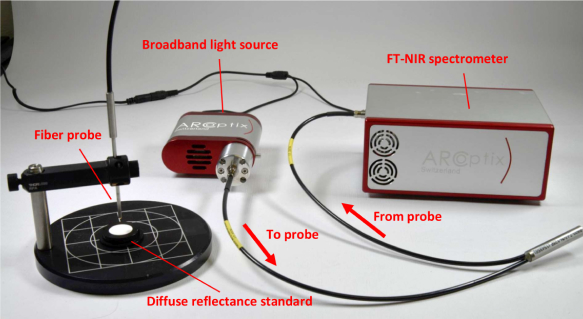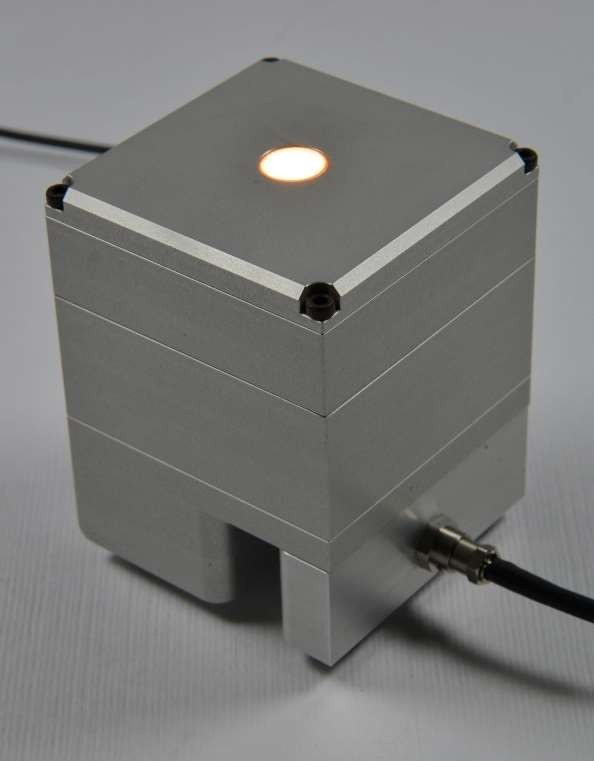The FT-NIR fibered spectrometer from Arcoptix represents a convenient and flexible tool to perform accurate diffuse reflectance measurements on a broad variety of samples and materials. Depending on the requirements of your application, certain configuration offers more flexibility or sensitivity required especially in high absorbance samples.
A Y-branched fiber bundle probe (R7-VIS-600-150F) is launching light onto the sample. The reflected light is collected and analysed in the interferometer (e.g. FTNIR-L1_026-0TE). For best results, the source requires sufficient power in the desired wavelength range as well as a fiber optic output or fiber coupling system. Here the source is a 20 W broadband lamp designed for NIR operation (ARCLIGHT- NIR).

The probe is maintained fixed by a dedicated mount which ensures stability and reproducibility. This helps acquiring an accurate reference, which can be provided using a highly reflective surface, e.g. a diffuse reflectance standard such as the one shown in the picture here above. Reflectance measurements are then carried out by placing the desired sample in place of the fully reflective element. For optimum results, the sample must be placed in identical illumination conditions as the reference, which implies placing the sample and the reference at an identical distance from the probe.
Alternatively, the fiber probe may be used with a dedicated adapter to be handled manually as shown in the figure below. This allows a rapidly acquisition of the diffusion spectrum of various samples before performing more accurate and complete measurements.

For highly reproducible diffuse reflectance measurements, the Arcoptix FT-NIR spectrometer can be coupled to dedicated integrating sphere with internal illumination (ARCSPHERE-50-HAL) shown here below. The sphere has an internal diameter of 50 mm and features a 5 W halogen lamp. This design provides with substantially higher signal-to-noise ratio (at least 50 times) than a conventional integrating sphere illuminated via fiber optic coupled light sources.

The sample is placed directly on the 10 mm sample port sapphire window. In addition to the fully reflective reference, it is advised here to additionally acquire a dark reference spectrum in order to suppress any contribution from background emission, which might originate e.g. from reflection on the sapphire window. The dark reference can be obtained by scanning the interferometer in the absence of any sample (as shown in the image). In order to ensure high accuracy measurements, special care must be taken in order to maintain the sample window as clean as possible, especially after direct contact with the measured sample.
